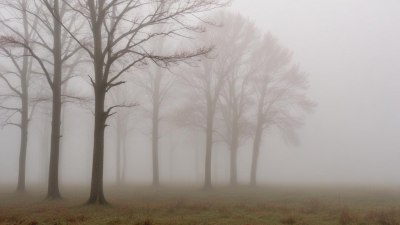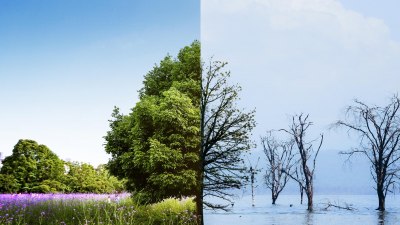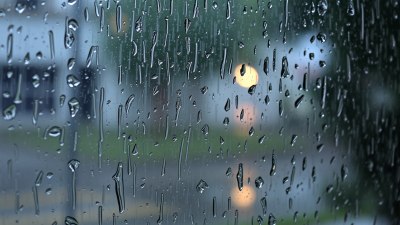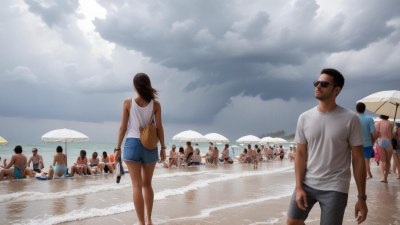Why Fog Makes Sounds Travel Farther
Explore how fog affects sound propagation, enabling it to travel greater distances and the science behind this phenomenon.

This image was created with the assistance of Freepik
Fog is a common atmospheric phenomenon that can significantly affect various aspects of our environment. One of the most intriguing effects of fog is its ability to enhance sound propagation, allowing sounds to travel farther than they would in clear conditions. Understanding why this happens involves delving into the physics of sound waves, the properties of fog, and how these elements interact.
To begin exploring this phenomenon, it is essential to understand how sound travels. Sound is a mechanical wave that requires a medium, such as air, water, or solids, to propagate. In air, sound moves as a result of pressure variations, and its speed is significantly influenced by the medium's density and temperature. Typically, sound travels faster in warmer air and is affected by various atmospheric conditions.
The Role of Fog in Sound Propagation
Fog consists of tiny water droplets suspended in the air, effectively making the air an entirely different medium compared to clear conditions. When the air is filled with these water droplets, several changes occur which influence sound travel. One of the primary effects of fog is increased humidity, which modifies the density of the air. In humid conditions, sound waves can travel more efficiently due to the higher density of the sound-carrying medium.
Furthermore, the microstructure of fog droplets can scatter sound waves. When sound waves encounter water droplets, part of the wave energy can be scattered, while other parts may be refracted. This means that rather than dissipating quickly, sound can be redirected and travel along complex paths, covering greater distances. The scattering effect also helps in reducing high-frequency components, which can create a more mellow sound experience. For instance, in foggy conditions, you may notice that distant sounds, such as a train's horn or a car's engine, seem to resonate longer and more clearly than on a clear day.
Absorption and Reflection
Fog also plays a role in the absorption and reflection of sound waves. The presence of water droplets can absorb certain frequencies of sound, especially in the higher range. This absorption can serve to minimize background noise, leading to clearer sounds over greater distances. This is one reason why in foggy conditions, you might discern sounds that would typically be lost in the ambient noise of a less humid environment.
Moreover, fog can create a layer of sound reflecting layers that bounce off the denser, humid air above. This reflection can lead to echoes being more pronounced and sustained, further enhancing the perception of sound over longer distances. When sound waves hit these boundaries created by variations in temperature and humidity, they can reflect back down towards the ground, extending the reach of sounds that would otherwise fade quickly.
The Significance of Temperature Inversion
Another key factor in the interaction between fog and sound is the phenomenon of temperature inversion. Temperature inversion occurs when a layer of warm air traps cooler air at the surface, creating a scenario where sound can become significantly altered. In such conditions, the warmer air can bend sound waves back towards the ground, allowing them to travel farther without dissipating. Fog often coincides with temperature inversions, magnifying the effects created.
Temperature inversions can create a unique sound environment. Sounds may seem to carry a lot farther, becoming almost indistinguishable from the source, while also creating a surreal auditory experience. This is particularly noticeable during the early morning or late evening when fog is thickest, and inversions are most likely to occur. The combination of all these elements leads to an acoustic landscape where sounds reverberate and linger, allowing for experiences that are markedly different from those experienced in clear air.
Real-World Applications and Experiences
The implications of sound traveling farther in foggy conditions can be observed in various real-world scenarios. In nature, fog can enhance the sounds of wildlife, such as bird calls and animal movements, making them more audible to the human ear, despite being located further away. This aspect of fog creates a unique experience for hikers and outdoor enthusiasts who may find themselves enchanted by the sounds of a forest cloaked in mist.
In terms of urban environments, fog can also affect how we perceive sounds. Emergency vehicles, trains, and air traffic may become more audible in foggy conditions. This can highlight safety concerns for pedestrians and drivers, as sounds like sirens may be more acute, catching attention more effectively than in clear weather. Additionally, understanding how fog alters sound propagation is essential for urban planners and safety officials to ensure that warnings can be heard effectively during foggy conditions.
Scientific Investigations and Studies
Scientists and researchers are continually exploring the various interactions between fog and sound. Some studies have examined how different types of fog - from stratus to advection fog - impact sound travel differently. The findings can lead to a more rigorous understanding of atmospheric conditions and their impacts on sound propagation, contributing to advancements not only in meteorology but in acoustics and environmental science as well.
Furthermore, as the effects of climate change continue to evolve, understanding the relationship between humidity and sound could provide insight into how changing atmospheric conditions might further influence our auditory experiences. Such knowledge can help improve forecasting methods and enhance public safety during fog events, particularly in regions prone to dense fog.
In summary, fog significantly influences sound propagation, allowing sounds to travel farther through enhanced humidity, scattering, absorption, reflection, and the dynamics of temperature inversion. Collectively, these phenomena enhance the auditory landscape, providing unique experiences in both natural and urban environments. As scientists continue to explore this intriguing relationship, our understanding of acoustics in various atmospheric conditions will undoubtedly deepen, highlighting the intricate and often surprising interactions that define our sensory experiences.











